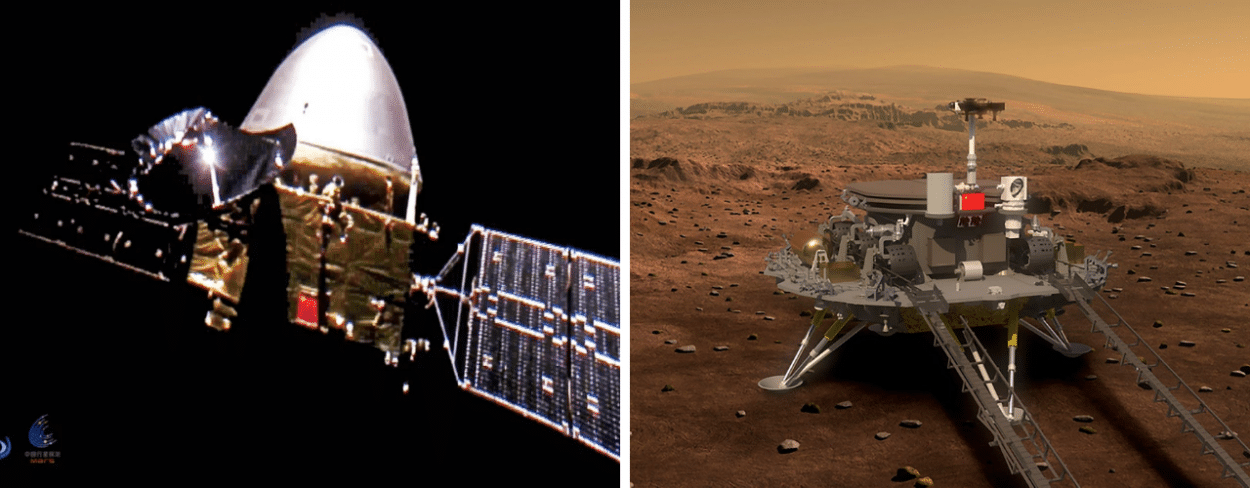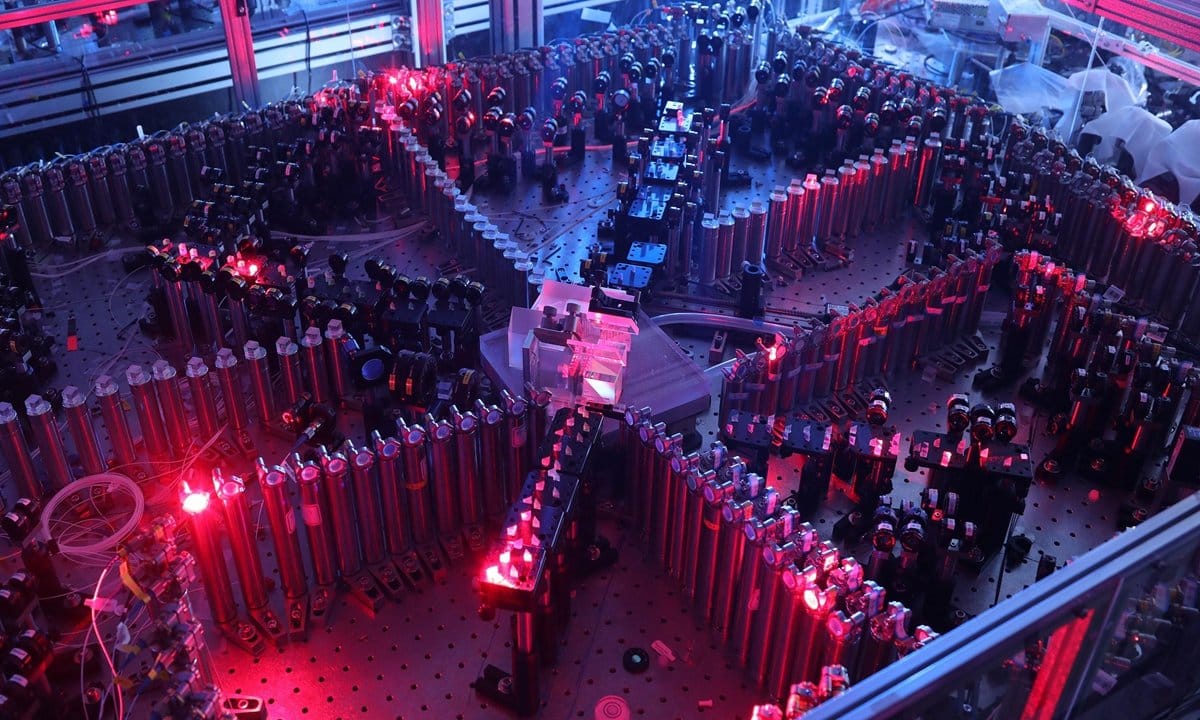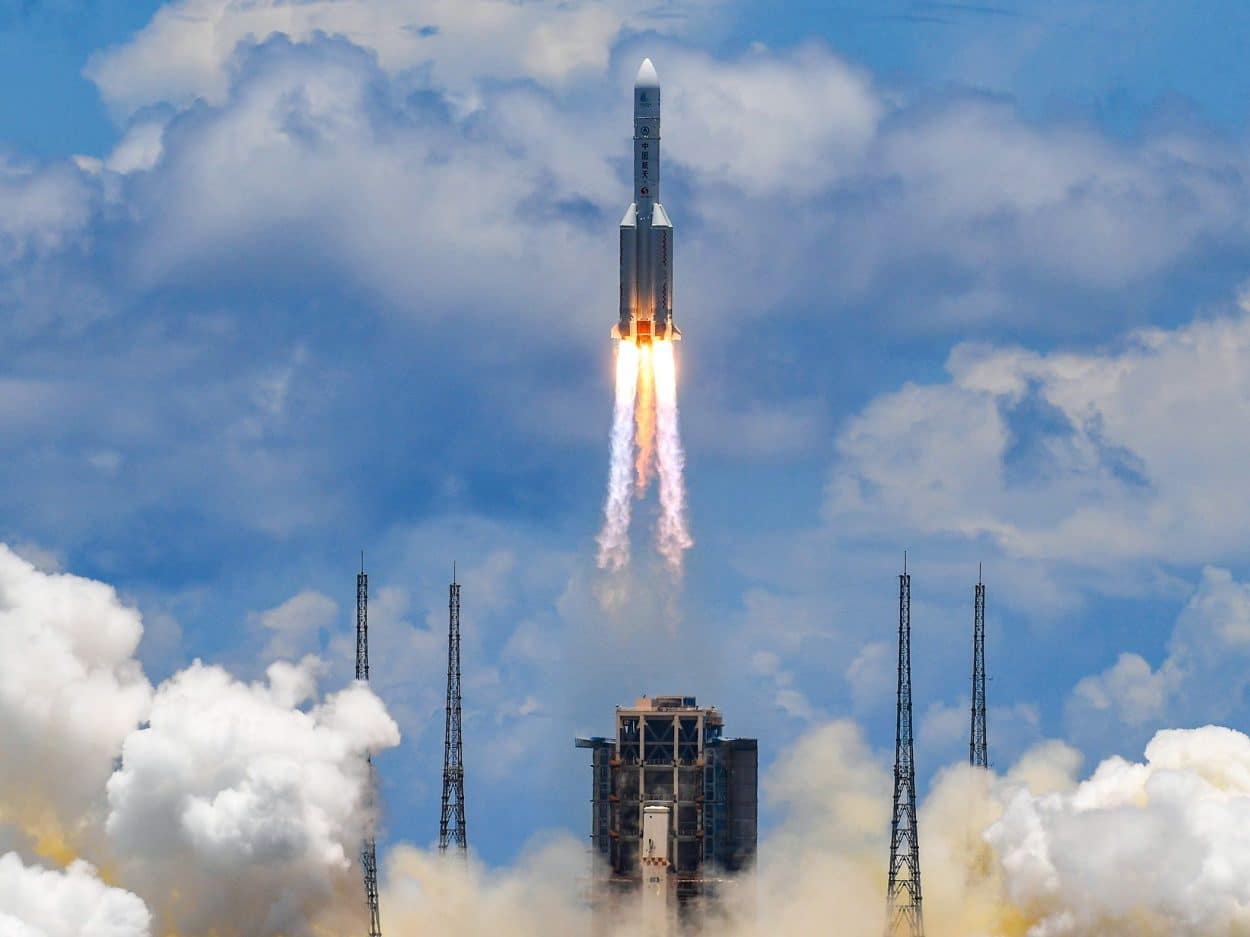China has recently doubled down on its efforts to become the world’s preeminent technological superpower. From space to computing, such efforts are already bearing fruit.
The Chinese government has never made any big secret of its desire to advance the country’s technological prowess. But in recent times that desire has become increasingly fervent. In 2020, Beijing announced its masterplan for accelerating China’s drive toward global technological supremacy, with a plan to inject more than $1 trillion into the national economy through 2025. A mix of public and private investment will be used to roll out everything from cutting-edge wireless networks to artificial intelligence (AI), with next-generation infrastructure supporting ever-higher levels of digitization and automation.
READ ALSO | Our special insights on China’s road to 2025
This audacious initiative is relying on the nation’s biggest and most influential tech giants – companies such as Huawei, Alibaba and Tencent – to drive development. Huawei, for example, has already been tasked with leading China’s domestic 5G push. The overall aim: to reduce China’s dependence on foreign technology and leapfrog the country ahead of the United States in a range of critical technologies, says Sofya Bakhta, an analyst with Daxue Consulting, a tech-focused consulting company with offices in Beijing, Shanghai and Hong Kong.
“The recent trade war with the US has seen China intensify its tech efforts to an unprecedented level. There is a word in Chinese – ganchao – which effectively means to ‘catch up and surpass’. This is Chinese president Xi Jinping’s stated intent – to see the country overtake all of its tech rivals and restore itself as a self-reliant great power.”
01. The Race for Space

China’s bid for technological supremacy is already manifesting itself in a variety of ways and arenas – some of which have seen the country push geographical as well as technological boundaries.
Having launched in July 2020, China’s Tianwen-1 spacecraft entered orbit around Mars in February 2021 – this is the country’s second interplanetary mission, but the first that it has attempted without international partners. The next step is to land on the surface of the red planet in May.
China’s mission to Mars is just one step in a plan that aims to establish the country as the world’s foremost space power by 2045, in time to celebrate the 100-year anniversary of the founding of the People’s Republic of China four years later. Looking at China’s achievements over the past 10 years – during which time the country has been the first to land on the Moon in about four decades – nobody could doubt the seriousness of its intent, says Blaine Curcio, founder of Orbital Gateway Consulting, market research and consulting firm focused on space and satellite telecommunications.
“Today China already has what is arguably the world’s second most-advanced space program. If we then consider that China has long-term plans for investing in space, has a lot of high-level government support for the sector, and is commanding an increasingly large presence in the global space industry, I think it’s pretty reasonable to expect China to be a world-leading space power by 2045.”
To increase competitiveness within its space industry, China has allowed the introduction of private capital into its commercial space sector. This has given rise to a proliferation of space companies, says Chinese space expert Lincoln Hines.
“China’s leadership views the emergence of a commercial space sector to be complementary to its traditional state-dominated space sector.”
Another imminent critical space mission for China is the launch of its permanent space station, which is scheduled for completion at the end of 2022. Building on decades of planning and launch experience with temporary space labs, as well as human and cargo dockings, China will shortly start missions to begin station construction, with astronaut training also now underway. In January, China’s main space contractor also announced progress on powerful new rocket engines which will be critical to future flights.
This week (on Tuesday, March 9th) Russia and China signed an agreement for a future lunar station. The details of this partnership are still unclear. In a statement, China National Space Agency refers to the construction of a station that will compete with the Lunar Gateway, the lunar orbiting station that the United States will be building in partnership with Europe, Canada and Japan.
02. Deep Sea Developments

From one extreme environment to another. Last year saw Chinese cutting-edge technology – in the form of the deep-sea manned submersible “Fendouzhe” (“Striver” ) – set a new Chinese diving record. The miniature submarine reached a depth of 10,909 meters in the Challenger Deep, an 11,000-metre chasm located at the bottom of the Mariana Trench in the western Pacific Ocean.
One of the world’s deepest-diving manned submersibles, the titanium-shelled, lithium battery-powered Fendouzhe was constructed using an innovative welding method and can carry up to three passengers. Almost all of the vehicle’s technologies and instruments were developed by Chinese scientists. For Sofya Bakhta,
“There is a certain amount of prestige for China in this kind of record-breaking exploration, of course. But there is a commercial angle too, with the country looking to push ahead in deep-sea mining.”
03. Quantum Leap
Back on terra firma, China is also investing huge sums in technological innovation and incorporating that innovation into everyday life.
In late 2020 a team of Chinese researchers, based primarily at the University of Science and Technology of China in the city of Hefei, claimed to have achieved quantum supremacy – the point where a quantum computer, which uses photons of light, completes a task that would be virtually impossible for a conventional computer to complete. Whereas the latter process data as either ones or zeroes, the bits of quantum computers can be a one and a zero simultaneously, which can raise processing power exponentially. According to the Chinese team, their computer – named Jiuzhang – is 10 billion times faster than the world’s first quantum supercomputer developed by Google two years ago explains Sofya Bakhta.
“In 2019 China committed to spending around US$ 10 billion pushing the development of quantum technology over the following three years. This is more than 10 times the amount committed by the US government over the same period. To establish real-world quantum supremacy China now needs to take its experimental achievements and extend them into areas with economic and scientific repercussions.”

04. Showcase Smart City
A whole range of next-generation digital technologies will be employed in Xiong’an – China’s so-called “city of the future” – which is being touted as a model of twenty-first-century high-tech green urbanism. Located around 100 kilometers from both Beijing and Tianjin, construction of the showcase smart city was interrupted by COVID-19, but is now continuing apace. Nearly three-quarters of the city will be covered by woodland, water, and wetlands.
An array of Chinese tech companies are using Xiong’an as a testing ground – China Mobile has opened 5G and AI labs in the city, China Telecom has set up its 5G Application Laboratory, and Baidu is testing its Apollo autonomous vehicles. Every piece of infrastructure in Xiong’an will be connected digitally through the Internet of Things, with Alibaba’s “Digital Xiong’an Program” connecting the city’s transportation, energy and water supply systems to Alibaba Cloud, enabling self-adjustment based on big data. For Sofya Bakhta,
“Xiong’an will most likely be used as a model to develop China’s inland cities or new cities along the Belt and Road. The aim is to take an area that has fewer natural advantages and make it highly liveable. If China can do this successfully, it can begin to move people from its heavily populated eastern seaboard back into western and central China.”












